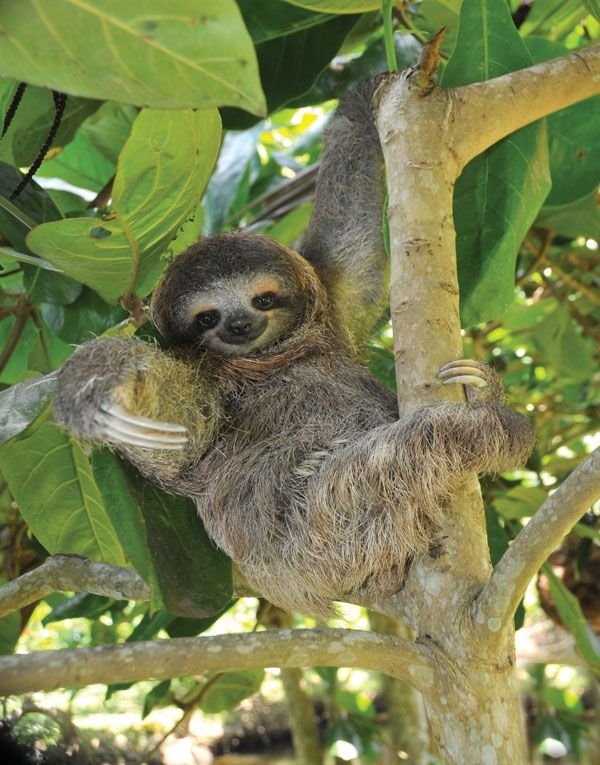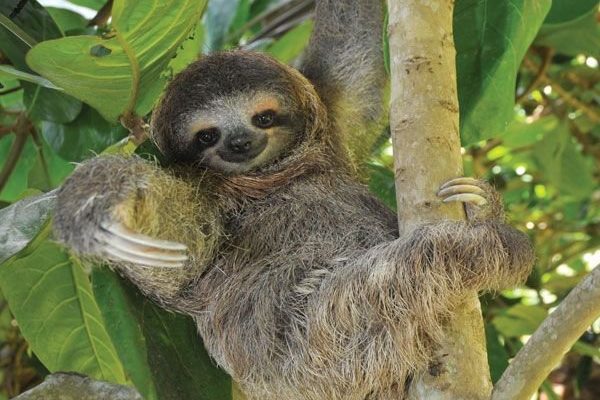
Sloths are not just adorable; they’re critical to the health of their ecosystems. As they munch on leaves and move through the trees, they contribute to a cycle that supports many forms of life. It’s like they’re in a slow-motion dance, and every step helps keep the music of the rainforest playing. So, grab a cup of coffee, and let’s explore the unique contributions of the three-toed sloth!
Key Characteristics of the Three-Toed Sloth
To understand the role the three-toed sloth plays in its ecosystem, it helps to know a bit about its characteristics. First off, these sloths are known for their distinctive three long claws, which they use to grip branches as they navigate their treetop homes. Unlike their two-toed relatives, three-toed sloths are generally smaller and have a more peculiar lifestyle.
These creatures primarily eat leaves, which are low in calories and hard to digest. As a result, they have slow metabolisms and spend most of their day napping or munching. Picture this: a sloth might spend up to 20 hours a day resting, moving only when necessary. This leisurely pace helps them conserve energy and, ironically, plays a vital part in their survival and the lives of other animals around them.
Due to their slow movements and folivorous diet, sloths are considered a keystone species in their ecosystem. This means they have a disproportionately large impact on the environment relative to their abundance. Their choice of food influences the plant life around them, creating a ripple effect that’s felt throughout the forest.
The Sloth’s Role in Plant Life
You might be wondering, how exactly do sloths impact plant life? The answer is simple yet profound: by eating leaves, sloths help manage the growth of certain plant species. This is important because it allows other plants to thrive and maintain a diverse ecosystem. Imagine a garden where one type of plant takes over; it can lead to a loss of variety, which is harmful to all the creatures living there.
Additionally, sloths have a special relationship with particular types of trees, like the cecropia tree. They feed on the leaves, and in return, the trees benefit from the cutting back of old or diseased foliage. This natural pruning helps the trees remain healthy and continue to grow, creating a vibrant habitat for various animals and insects.
Interestingly, sloths also contribute to seed dispersal. When they eat fruit or flowers, they unintentionally swallow seeds that pass through their digestive system. When the sloth defecates, the seeds are deposited elsewhere in the forest, giving rise to new plants. It’s like they’re planting little trees wherever they go!
The Sloth as a Habitat for Other Creatures
While sloths might seem like solitary animals, their presence creates opportunities for many other species. A sloth’s fur is home to a whole community of organisms, including algae, insects, and even small mammals. This algae can give sloths a greenish hue, which provides them with some camouflage, helping them evade predators. It’s like they wear their ecosystem on their backs!
The insects that thrive in sloth fur can be beneficial, too. Some of these bugs are food for birds and other small animals. So, in a way, the sloth becomes a mobile ecosystem, supporting various life forms simply by going about its daily routine.
Additionally, when sloths descend from the trees—something they do only about once a week to relieve themselves—they create a nutrient-rich fertilizer that nourishes the soil. This practice helps promote plant growth and supports the web of life within the rainforest.
Interactions With Other Species
Sloths are not just passive participants; they actively interact with several other species in their environment. For example, they share their trees with other animals like howler monkeys, birds, and even snakes. This sharing creates a dynamic community, where each species relies on one another for survival in some way.
Predators, such as jaguars and eagles, rely on sloths as a source of food. This relationship may seem one-sided, with sloths being the prey. However, it’s essential for maintaining a balanced food web. Without predators, sloth populations could grow too large and over-consume their food sources, leading to ecological imbalances.
Furthermore, sloths may also engage in mutualistic relationships. Take the sloths and their algae—this relationship benefits both. The algae gain a place to grow, while the sloths gain a bit of camouflage. Nature truly has a way of creating partnerships that enhance survival!
Why Conservation of Sloths is Crucial
Given the essential role that three-toed sloths play in their ecosystems, protecting them is vital. Unfortunately, their habitats are threatened by deforestation, climate change, and habitat fragmentation. As humans encroach upon their territory, we not only put sloths at risk but also disrupt the intricate web of life they support.
Conservation efforts focused on sloths can help maintain the health of their ecosystems. By protecting the forests where sloths thrive, we’re also ensuring the survival of countless other species that depend on the same habitat.
Organizations and researchers are working hard to raise awareness about the importance of sloths and their role in forest ecosystems. Supporting these efforts can make a difference—whether through funding, advocacy, or simply spreading the word about the incredible life of sloths.
The Big Picture of Ecosystem Health
In the grand scheme of things, the three-toed sloth plays a vital role in maintaining the health of its ecosystem. Their slow movements might give off an impression of laziness, but they’re far from idle. They influence plant life, support other species, and contribute to nutrient cycling within the rainforest.
When we consider ecosystems, it’s easy to overlook the smaller, less flashy creatures like sloths. But as we’ve seen, every species has a role to play. By appreciating and protecting these unique animals, we help sustain the biodiversity that keeps our planet thriving.
So, the next time you think of sloths, remember the big role they play in their ecosystem. They may be slow, but their impact is anything but sluggish. Let’s celebrate these gentle giants and work together to ensure they continue to flourish in their natural homes.

